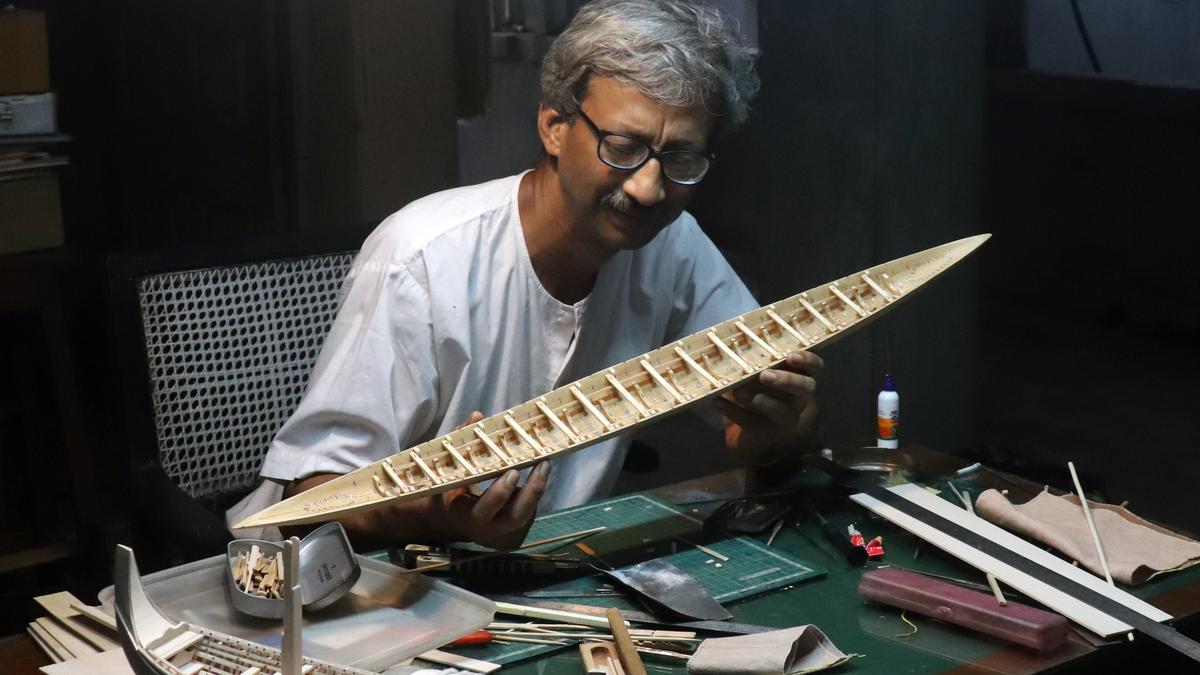
With onset of monsoon, boat races set to enthral rural Bengal
The Hindu
Discover the lesser-known boat races of Bengal, rich in tradition and culture, showcasing unique racing boats and female participation.
With the south-west monsoon gradually setting in, boat races will soon begin in several rural pockets of West Bengal — in Murshidabad, Nadia, North and South 24 Parganas — even though the tradition here does not enjoy the kind of countrywide popularity as enjoyed by the one in Kerala.
“Boat races usually begin in the middle of the rainy season and they continue till September, sometimes till October, even November in some places. That way, boat race in Bengal held on a far greater scale in Kerala, where it is held only during the Onam festival with only one kind of boat participating,” said anthropologist Swarup Bhattacharyya, who has been documenting Bengal boats for nearly three decades now.
He has been making scientific models of the boats for the past few years to preserve them for posterity.
Mr. Bhattacharyya held an exhibition in Kolkata of his boat models sometime ago and his most recent creation is a model of Sorengi, one of the traditional racing boats of Bengal. “Unlike in Kerala, here four to five kinds of traditional boats are used for the races; that way we are ahead of them, but unfortunately, we are not as famous. Even people in Kolkata are hardly aware of the boat races of Bengal,” he said.
According to Mr. Bhattacharyya, boat race — called nouka baich in Bengal — is essentially a part of Southeast Asian culture and is most common in countries such as China, Vietnam, Cambodia, and, of course, Bengal, including Bangladesh as well as West Bengal. Sorengi, whose model he crafted most recently, is of Bangladeshi origin.
“Someone requested me to make this model, but I also made it for another purpose: to tell people, through social media, that such a beautiful boat is used for our boat races. Sorengi is about 90 ft long, the front is narrow and the rear is like the tail of a fish — a shining example of how boats imitate nature. This boat is an essential part of Bengali culture,” he said.
Other boats that are commonly used for races in Bengal include the Chhip, Kaile Bachhhari, Chande Bachhari, Chitoi and Sorpi. “Not only that, in Nadia I have seen people using earthen pot as a boat. I have also seen plantain raft being used in a Sundarban village,” said Mr. Bhattacharyya, who is currently working on a model of Chhip, among the most popular race boats.

In a breathtaking display of musical prowess, the Singspirations, a Tiruchi-based choir group, in collaboration with the Glauben Ensemble and the Genesis Chamber Orchestra, presented a sublime performance of Wolfgang Amadeus Mozart’s Requiem in D minor, K. 626, in its entirety, mesmerising audiences.












